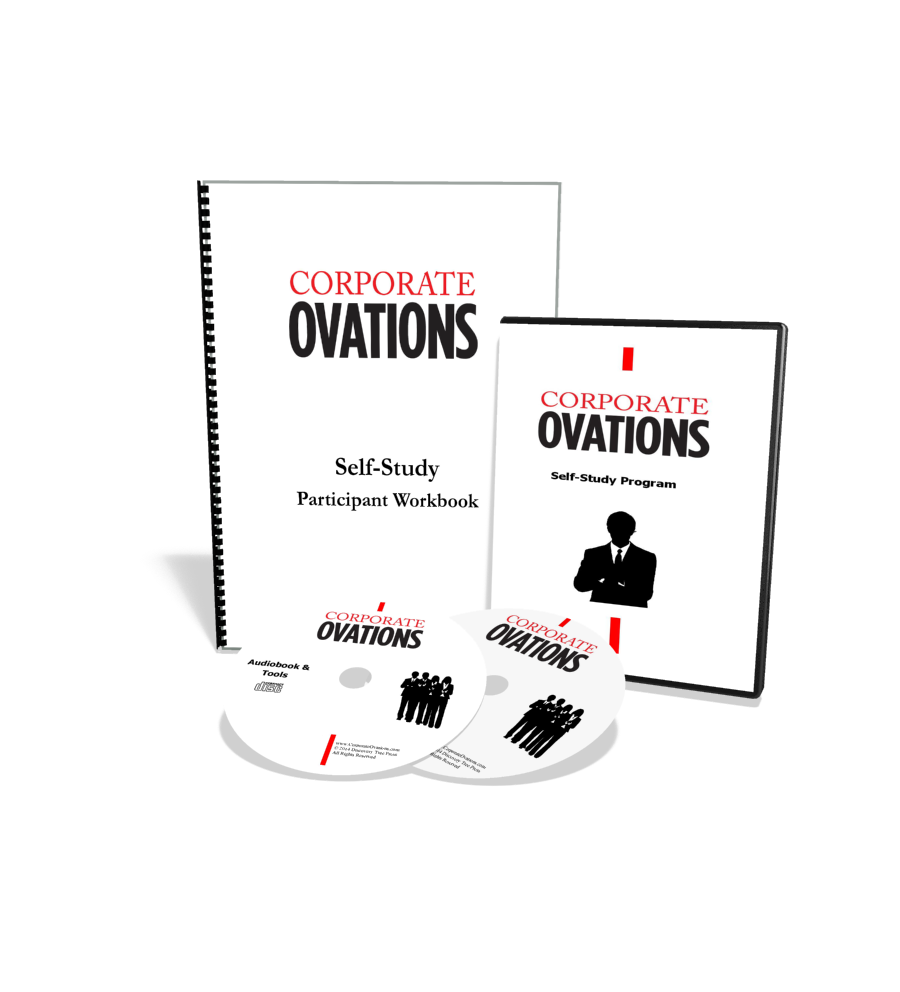“No, seriously… what am I supposed to do with my hands?” My student asked this cliche question I’ve heard numerous times. Each time I hear it I can’t help but think of Will Ferrell in the Talladega Nights Movie. I had only one answer for my student. “Move them with purpose.” Then he said, “How do I do that?”

Start with what THEY know
Body language shouldn’t have to be this difficult, and it’s not. First you need to start with the audience’s perspective. In others words, focus on body language the audience will interpret the same every time. Focus on all movements that have a universal interpretation.
If you know 99.9% of the people in your audience will interpret a hand gesture a certain way, then you can either use it to make a point or avoid it to prevent confusion or offending someone. The last thing you’d want to do is send a mixed message where you say one thing and your body language says something completely different. That will cause your perceived credibility to drop!
For example, Dr. Paul Ekman’s research on non-verbal communication found seven universal facial expressions every human can interpret. It doesn’t matter where you were born on this planet, everyone seems to come pre-programmed with the ability to interpret these seven facial expressions. (happy, sad, scared, angry, disgust, surprise, and contempt)
If everyone on the planet knows these expressions, then they’re universal. So, it would be wise to show a look of happiness on your face when you say, “I’m happy to be here today!” If you show fear on your face when you say it, you’re sending a mixed message, and your credibility drops!
How to Use Movement with Purpose
Non-verbal movements will get interpreted by your audience and categorized in one of three ways. You’re audience does this without even thinking. Two of these three buckets are helpful because the audience uses the movements to help with the interpretation of your communication. The third doesn’t help at all and in most cases actually harms your communication.
1. Movements to Support the Verbal
The first category of movements support the words you’re saying, but if you did these same hand gestures without your words for support, your audience would actually get quite confused. These are the hand gestures you do naturally when you’re speaking. In a comfortable setting, you do these types of gestures all the time without even thinking about it.
Imagine… you’re at a dinner table with 5 other people and everyone is listening to your humorous story at the grocery store. Picture your hand gestures as you tell your story, “The box of cereal fell from the ledge as I turned the cart around. When I tried to reach for it I ended up punching toward the tower display of graham crackers on the end and the whole thing came crashing down around me.”
My question for you is this, “As you’re telling this story to your friends… are you using your hands?” My guess is your answer is “Yes”, but I bet you’re not thinking about what your hands are doing. You’re just naturally using your hands to support the story as you speak. If you did the same sequence of hand gestures a second time but spoke no words, we’d do our best to play charades with you, but we’d likely misinterpret without your words to support it.
Audience impact:
Audiences love these type of gestures because it helps them interpret and they view the speaker as more engaging. When speaking to others, allow your hands to accentuate your verbal to help the audience understand the verbal. Try not to think about forcing your hands to do something and your brain will naturally take over by using complementary movements.
2. Movements with Direct Interpretation
Some hand gestures need no supporting words to be interpreted properly. Now before you let your mind get too negative with hand gestures, let me give you some gesture examples we’ve all used before. Picture a hand gesture or facial expression for the following words or phrases.
- Shhhhh.
- Stop!
- Come here.
- No, no, no, no.
- Oh, well… whatever.
You can probably do the gesture without saying word and your audience would know what you’re talking about!
Audience impact:
Since audiences can easily interpret these movements with or without verbal to support them, they will love them. Speakers tend to use these types of gestures to make strong point or with storytelling. These types of gestures can bring stories to life and make speakers appear extremely engaging.
3. Movements with No Meaning
Non-verbal movements that don’t support the verbal or have meaning on their own are just distractions. In other words, anything that doesn’t fit in category 1 or 2 falls into category 3. These type of movements need to be coached out of the speaker. They are distracting to the audience and potentially even confusing for them!
Audience Impact:
Audiences become distracted or even confused when they see movements that have no meaning. The human brain interprets everything. If the distracting movements are supposed to be ignored by the audience, you just made it more difficult for them to interpret your communication! When it gets hard or confusing to understand you, they’ll just quit. That usually means they’ll just get on their smartphones.
What can we do?
If you want to get better with your non-verbal communication, you’ve got to use more movements from bucket #1 and bucket #2 while eliminating anything from bucket #3. Focus on being natural when you speak. If you know your subject well, take some time to rehearse. This helps you focus more on what your doing and not how well you’re doing it!
Remember… always give the audience what they came for!
I’ll do my best to do that too,
Russ
Let’s connect on Twitter if we haven’t already?
OR Let’s connect via my Facebook page!
Get the Corporate Ovations Video Self-Study Course for FREE!
 Public speaking and presentation skills are a key to your career success. Learn the same skills we’ve taught to thousands of corporate customers over the past decade in this FREE video-based program. It’s all designed to help make you a better speaker no matter what your skill level.
Public speaking and presentation skills are a key to your career success. Learn the same skills we’ve taught to thousands of corporate customers over the past decade in this FREE video-based program. It’s all designed to help make you a better speaker no matter what your skill level.
When you sign up for my weekly blog I’ll send you a link to iSpeak’s Corporate Ovations Self-Study Course. It comes with 12 lessons on public speaking. Each lesson includes a teaching video, exercise, application exercise and a challenge to get you out of your comfort zone. You can get the Self-Study Course here.
iSpeak teaches workshops on Professional Selling to help sales professionals gather the most important data and then use that information to align the right message. Are your sales presentations closing eyelids or deals?
Russ Peterson Jr. is the co-founder and Managing Director of iSpeak, Inc. – An award-winning professional development training company. Russ is a speaker, international trainer, and published author on Professional Sales Communication and Business Communication. He delivers workshops, keynotes, and personal communication coaching services to business professionals in the US and around the world. You can connect with Russ directly through Twitter, Facebook and LinkedIn.



Please note: I reserve the right to delete comments that are offensive or off-topic.